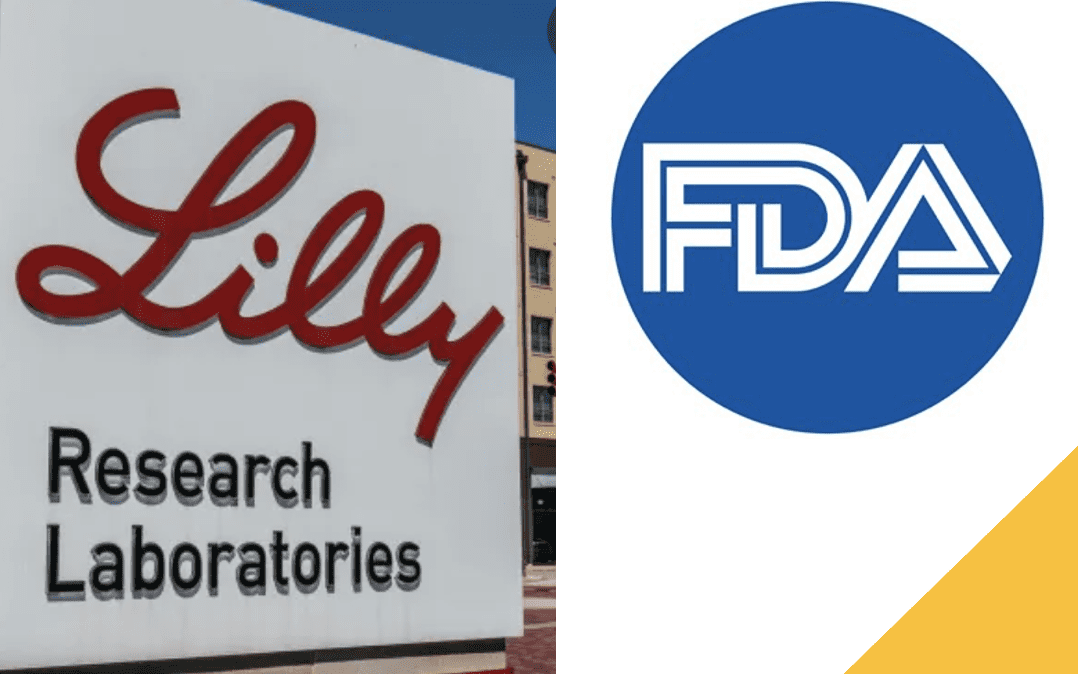Search Posts
Recent Posts
- Rhode Island Weather for June 9, 2025 – Jack Donnelly June 9, 2025
- Our Networking Pick of the Week: Uncle Jay’s Traveling Breakfast Network June 9, 2025
- When favorable treatment looks like discrimination – Mary T. O’Sullivan June 9, 2025
- To Do in RI: Literary Walking Tour, Discussion with writers in residence at Linden Place June 9, 2025
- New report recognizes music’s therapeutic and financial value in Alzheimer’s care – Herb Weiss June 9, 2025
Categories
Subscribe!
Thanks for subscribing! Please check your email for further instructions.

Lilly gets first EUA for monoclonal antibody treatment for children, babies
The U.S. Food and Drug Administration revised the emergency use authorization (EUA) of bamlanivimab and etesevimab (previously authorized for pediatric patients 12 years of age and older weighing at least 40 kilograms, or about 88 pounds), to additionally authorize bamlanivimab and etesivimab administered together for the treatment of mild to moderate COVID-19 in all younger pediatric patients, including newborns, who have a positive COVID-19 test and are at high risk for progression to severe COVID-19, including hospitalization or death. This revision also authorizes bamlanivimab and etesevimab, to be administered together, for post-exposure prophylaxis for prevention of COVID-19 in all pediatric patients, including newborns, at high risk of progression to severe COVID-19, including hospitalization or death.
“Now all patients at high risk of severe COVID-19, including children and newborn babies, have an option for treatment and post-exposure prevention. Children under one year of age who are exposed to the virus that causes COVID-19 may be at particularly high risk for severe COVID-19 and this authorization addresses the medical needs of this vulnerable population,” said Patrizia Cavazzoni, M.D., director of the FDA’s Center for Drug Evaluation and Research. “While today’s authorization includes post-exposure prevention of COVID-19 in children, this therapeutic option is not a substitute for vaccination. Vaccines remain our best tool in the fight against the virus and there is a COVID-19 vaccine authorized for children 5 years of age and above.”
Monoclonal antibodies are laboratory-made proteins that mimic the immune system’s ability to fight off harmful pathogens, such as viruses. Bamlanivimab and etesevimab are monoclonal antibodies that are specifically directed against the spike protein of SARS-CoV-2, designed to block the virus’ attachment and entry into human cells. Bamlanivimab and etesevimab bind to different but overlapping sites on the spike protein of the virus.
In February, the FDA originally authorized bamlanivimab and etesevimab administered together to treat mild-to moderate COVID-19 in adults and pediatric patients (12 years of age or older weighing at least 40 kg) with positive results of direct SARS-CoV-2 viral testing, and who are at high-risk for progressing to severe COVID-19 and/or hospitalization. In September, the agency authorized its use for post-exposure prevention of COVID-19 in certain adults and pediatric individuals (12 years of age and older weighing at least 40 kg) who are at high-risk for progression to severe COVID-19, including hospitalization or death.
To support today’s action, bamlanivimab and etesevimab, administered together, were studied in a clinical trial of 125 pediatric patients (14 adolescent patients received placebo), all with at least one risk factor for severe COVID-19, to evaluate the safety and pharmacokinetics of treatment in pediatric patients. Patients weighing less than 40 kg (88 pounds) received doses of bamlanivimab and etesevimab adjusted for their body weight, to achieve comparable exposures to adults and adolescents receiving the authorized dose. Given the similar course of COVID-19 disease, the authorization of bamlanivimab and etesevimab in younger pediatric patients, including neonates, is supported by safety and efficacy data in adolescents and adults, together with additional pharmacokinetic and safety data from the clinical trial in pediatric patients.
Serious adverse events including hypersensitivity, anaphylaxis, and infusion-related reactions have been observed with bamlanivimab with and without coadministration of etesevimab. Possible side effects of bamlanivimab and etesevimab administered together include nausea, dizziness, pruritus, and rash.
The FDA is working with sponsors of all currently authorized therapeutics to assess the activity against any global SARS-CoV-2 variant(s) of interest and is committed to communicating with the public as we learn more.
Under the EUA, fact sheets that provide important information about the emergency use of bamlanivimab and etesevimab, to be administered together, must be made available to health care providers and to patients, parents and caregivers. These fact sheets include dosing instructions, potential side effects and drug interactions.
The EUA was issued to Eli Lilly and Co.
